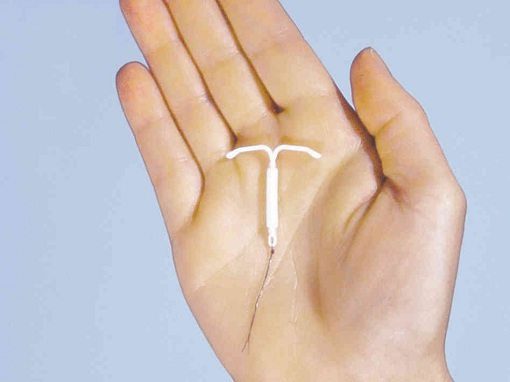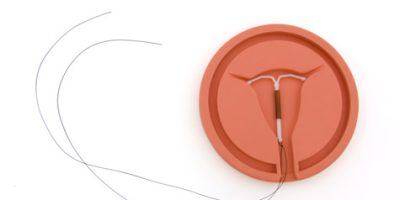Mirena Lawsuits
Women filing Mirena lawsuits accused Bayer Pharmaceuticals of hiding organ perforation and pseudotumor cerebri side effects and making a defective intrauterine device (IUD). Bayer offered to settle some perforation lawsuits for $12.2 million and most lawyers are no longer accepting cases.
- Last update: June 6, 2025
Mirena Lawsuit Updates
The final Mirena multidistrict litigation (MDL) closed on Dec. 8, 2020. As of July 2025, there are no new major developments in this litigation and most lawyers, including our legal partners, have stopped accepting cases.
Originally, there were two large groups of Mirena lawsuits consolidated in federal MDLs. One was for organ perforation lawsuits, and the other was for pseudotumor cerebri lawsuits. Both were in the Southern District of New York.
There was also an active multicounty litigation in New Jersey for perforation and migration. All litigation has been closed.
Ultimately, this litigation came down to evidence from studies and experts, and — according to court documents we reviewed and the opinions of attorneys — Mirena lawsuit judges didn’t accept any of the experts that plaintiffs offered.
While we currently don’t have any firms to refer potential clients to, we have provided a brief overview of these cases based on research and comments from attorneys.
Timeline of Mirena Lawsuit Highlights
-
October 2023:
The U.S. District Court for the Northern District of California ruled that Priya Sidhu’s Mirena class action fraud claim wasn’t preempted by federal labeling law. The lawsuit was allowed to continue, according to court documents we researched. The documents said Sidhu’s lawsuit claimed “Mirena in fact is not suitable for use as birth control because it increases the risk of breast cancer in users by approximately 20 to 30%.” Given the history of Mirena litigation, we are waiting to see if this class action will provide any relief to the plaintiffs.
-
March 2022:
Priya Sidhu filed a class action lawsuit for deceptive marketing in California, but this isn’t connected to the two closed MDLs for injuries. Sidhu claimed Bayer committed fraud and didn’t disclose breast cancer risks.
-
December 2020:
The MDLs were closed. Ultimately, our research showed us that this litigation depended on the evidence presented by experts. Unfortunately, the judges didn’t accept the experts that were offered, according to comments from lawyers. This doesn’t mean that women weren’t injured by Mirena, it just means judges didn’t agree that the current evidence from experts was acceptable, which means plaintiffs would be unable to prove that the Mirena device actually caused their injuries.
-
September 2020:
Judge Rachelle L. Harz who was handling the Mirena cases in the New Jersey MCL issued an order to close the MCL. The settlement Bayer offered was also intended to include these plaintiffs. Plaintiffs who did not want to be included in the settlement or missed the deadline to provide necessary documents for the settlement had to write to the judge and tell her why their cases should not be dismissed.
-
October 2018:
The judge overseeing the Mirena pseudotumor cerebri MDL in New York dismissed all the cases because plaintiffs’ expert witnesses were unable to provide adequate scientific evidence linking the injuries to Mirena.
-
April 2018:
Lawyers drafted the master settlement agreement for Bayer’s $12.2 million offer in April 2018 to resolve thousands of Mirena-related cases (not including pseudotumor cerebri cases). This was the only settlement agreement made public. It’s possible that Bayer could have settled quietly for an undisclosed amount with some plaintiffs, but we couldn’t confirm this.
-
August 2017:
Bayer offered $12.2 million to settle organ perforation cases. Bayer estimated the settlement would include 4,600 claims in MDLs and the New Jersey MCL.
Why Did People File Mirena Lawsuits?
Thousands of women nationwide sued Bayer Pharmaceuticals over Mirena birth control after they say it perforated the uterus, damaged organs and caused pseudotumor cerebri — an abnormal fluid buildup in the skull.
These women said Mirena complications led to diminished quality of life and they live in fear of future complications.
“I’ve had four surgeries in less than a year. I’m still paying medical bills. When you talk about the stress and all the debt associated with [Mirena complications], I wouldn’t do it.”
“Knowing what I know now, I wouldn’t do it. I think that I would rather abstain from sex. I would not put the Mirena in my life,” one Mirena patient, S.D., told Drugwatch. “I’ve had four surgeries in less than a year. I’m still paying medical bills. When you talk about the stress and all the debt associated with it, I wouldn’t do it.”
S.D., who had been looking to file a lawsuit, told us that she suffered from serious pressure in her head, migraines, hair loss, blurred vision and complications from IUD migration. She had to have surgery after the IUD migration. Ultimately, she had to have a hysterectomy because of complications doctors told her were related to using Mirena.
Migration and Organ Perforation
Women in MDL 2434 claimed the IUD perforated their organs. This is when the device pokes a hole through an organ, such as the uterus. Perforation can occur during insertion or any time after. Lawsuits said that Bayer never properly warned women that the device could cut through organs.

Like perforation lawsuits, migration lawsuits alleged the device migrated outside the uterus. Migration leads to injuries such as perforation and organ damage. In cases where the IUD migrates, women likely need to have Mirena surgically removed. Some women who filed lawsuits had to have multiple surgeries to correct complications.
The judge dismissed 1,230 of these cases in 2016. Lawyers for the plaintiffs appealed the dismissal, but the U.S. Court of Appeals for the Second Circuit affirmed the dismissal in October 2017.
The last of these lawsuits were resolved by mid-September 2018, and Bayer offered $12.2 million to settle these cases and perforation claims in other courts.
Pseudotumor Cerebri Injuries
In MDL 2767, women claimed Mirena caused pseudotumor cerebri. This term means “false brain tumor.” Unlike perforation or migration claims that deal with physical damage related to the IUD moving from the uterus, these claims said the hormone inside Mirena, levonorgestrel, was to blame.
The hormone can cause an abnormal elevation of cerebrospinal fluid in the skull, resulting in pseudotumor cerebri (also known as idiopathic intracranial hypertension).
According to these lawsuits, Bayer misled plaintiffs about the implant’s safety by not properly explaining how the hormone works. Because this hormone is more active than other similar birth control hormones, it is more likely to cause side effects, lawsuits said. Specifically, women who used Mirena or other levonorgestrel products more commonly develop pseudotumor cerebri.
In April 2018, plaintiffs and defendants gathered to go over the medical and scientific issues surrounding Mirena, according to the court docket. This MDL is now closed.
New Jersey Lawsuits Consolidated
Like the New York MDL, Mirena lawsuits in New Jersey said the IUD migrated and caused injuries. The court consolidated these cases into a multicounty litigation (No. 297) in New Jersey Superior Court Bergen County. In July 2018, there were more than 1,800 active cases.
But on May 9, 2018, Bergen County Superior Court Judge Rachelle L. Harz dismissed a large group of cases because the statute of limitations (the deadline by which plaintiffs must file suit) had expired. Shortly after, Bayer and the remaining plaintiffs entered into a confidential master settlement with a deadline to respond by June 29, 2018.
In a case management order dated Aug. 31, 2018, Judge Harz ruled that plaintiffs who do not appear before the court or respond with their intent to join the settlement by Oct. 9, 2018, would have their cases dismissed. The MCL was closed in April 2021.
Women Who Sued Bayer
Women who filed Mirena lawsuits accuse Bayer of knowingly harming them, and they want compensation for medical expenses, lost wages, and pain and suffering.
Lawsuits said plaintiffs suffer “diminished enjoyment of life and a future of high risk pregnancies and infertility, as well as the need for lifelong medical treatment, monitoring and/or medications, and fear of developing any of the above named health consequences.”
“When placed in the stream of commerce, Mirena contained unreasonably dangerous design defects and was not reasonably safe as intended to be used, subjecting the Plaintiff to risks that exceeded the benefits.”
In addition, plaintiffs claim that Bayer misrepresented Mirena’s risks as “uncommon” and hid the harmful side effects from women and their doctors, lawsuits allege. Plaintiffs also accuse Bayer of using deceptive marketing that targeted mothers and portrayed Mirena as safe and convenient.
Johnson V. Bayer
Desaree Nicole Lee Johnson filed a suit against Bayer after her Mirena device moved and cut into her uterus. She had surgery to remove it. Later, she became pregnant, but it ended in a miscarriage. Johnson may now be infertile. She accused Bayer of knowingly releasing a defective and unsafe product.
Williams V. Bayer
Melody Williams accused Bayer of negligence and fraud. She also claimed the company failed to warn consumers of dangerous Mirena side effects. Williams experienced abdominal cramping and pain less than a year after receiving a Mirena device. The first attempt to remove the device was unsuccessful. During a second surgery, doctors found that the device had “migrated through the opening of the plaintiff’s right fallopian tube.”
Williams suffered from pain and infection and had to undergo many procedures. She accused Bayer of “[willful] and reckless disregard for the public safety.”
Everett-Carey V. Bayer
Katrina Everett-Carey filed suit against Bayer after doctors diagnosed her with pseudotumor cerebri. Shortly after receiving a Mirena device, she experienced blurred vision and intense headaches. Her diagnosis came about a year after she began using Mirena. “Defendants failed to adequately and properly test the Mirena both before and after placing it on the market,” the lawsuit said.
Calling this number connects you with a Drugwatch.com representative. We will direct you to one of our trusted legal partners for a free case review.
Drugwatch.com's trusted legal partners support the organization's mission to keep people safe from dangerous drugs and medical devices. For more information, visit our partners page.



